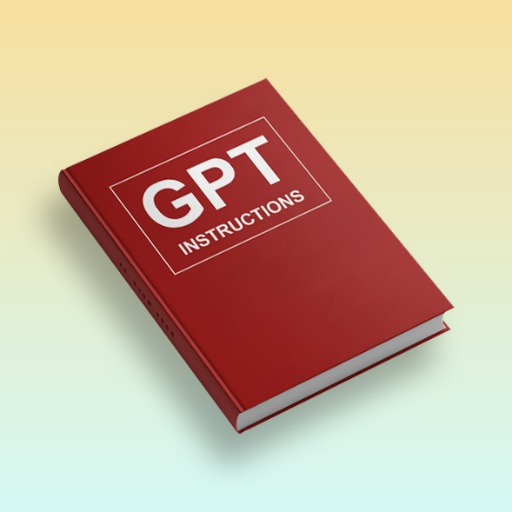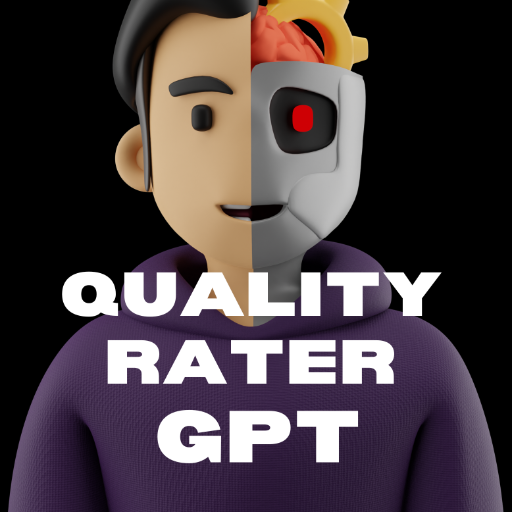ComposeGPT-Jetpack Compose code assistant
AI-powered Jetpack Compose guidance
Please help me with a Jetpack Compose issue.
I need code for a Compose component.
Can you guide me on a Material3 layout?
Troubleshoot my Compose code.
Related Tools
Load More
GPT Instruction Genius
[V4] Crafts detailed instructions from your ideas, to create GPTs that provide structured and consistent outputs. Tip: Write '/changelog' to see the latest changes!

Create a GPT
Assists in GPT model creation

ComposeGPT
ComposeGPT helps you build apps using Jetpack Compose

GPT Builder Builder
Your guide to creative GPT building.

Inception GPT | Custom GPT Maker | Custom GPT
I create prompts so you can build your own custom GPT AI chat tool with advanced machine learning and self improving models. Your Custom GPT Maker is the ultimate inception tool to make your own custom GPT for any AI powered business. Your Chat GPT AI gam

Instruction Creator
Custom GPT instruction creation guide. Copyright (C) 2024, Sourceduty - All Rights Reserved.
20.0 / 5 (200 votes)
ComposeGPT: Your Expert Guide to Jetpack Compose
ComposeGPT is designed to help developers, especially Android developers, master Jetpack Compose and Material 3, which are key components in modern UI development for Android apps. My purpose is to offer practical advice, detailed code examples, and best practices for designing efficient and scalable user interfaces using the Compose framework. By offering rich contextual answers, tailored suggestions, and hands-on guidance, ComposeGPT facilitates a smoother development experience, from writing modular code to debugging complex layouts. Scenarios where I shine include guiding developers through component creation, integrating UI with logic, and solving common Compose-specific challenges, such as state management and layout composition.

Core Functions of ComposeGPT
Component Design
Example
Helping a developer design a complex card layout in Jetpack Compose using `Row`, `Column`, and `Box` composables.
Scenario
A developer is working on a shopping app and needs to create a card component that displays product information in a clean and visually appealing layout. I can provide a detailed breakdown of how to use composables like `Card`, `Row`, and `Image`, along with theming, to achieve the design.
State Management
Example
Guiding a developer in managing UI state with Jetpack Compose’s `remember` and `mutableStateOf`.
Scenario
When building a chat app, a developer needs to manage and display dynamic chat messages. I guide them on how to use Compose's `remember` function for maintaining state across recompositions, ensuring the chat remains responsive and up-to-date.
Performance Optimization
Example
Offering tips to reduce unnecessary recompositions using `key` and `remember` blocks.
Scenario
A developer notices performance lags in a list-heavy app. I suggest optimizing their `LazyColumn` implementation with `key` to prevent redundant recompositions of list items, improving scrolling performance.
Target Audience for ComposeGPT
Android App Developers
Developers who are either transitioning from XML-based UI development to Jetpack Compose or are already familiar with Compose but want to dive deeper into advanced concepts like custom components, performance optimization, and state management. They benefit from ComposeGPT’s comprehensive guidance on how to effectively use Material 3 and integrate new Compose features.
UI/UX Designers Collaborating with Developers
Designers working closely with developers can use ComposeGPT to better understand the capabilities of Jetpack Compose and how to implement modern UI/UX designs in code. By learning about constraints, layout flexibility, and responsive design, they can create more feasible and developer-friendly designs.

How to Use ComposeGPT
Visit aichatonline.org for a free trial without login, also no need for ChatGPT Plus.
Start by going to aichatonline.org, where you can try ComposeGPT for free without the need to log in or purchase ChatGPT Plus. This allows for a hassle-free experience and immediate access to ComposeGPT’s features.
Install Jetpack Compose & Material3
Ensure your Android development environment has Jetpack Compose and Material3 installed. These are essential for using ComposeGPT to its full potential.
Select a Project Type
Choose from several project types like UI development, component creation, or Android application development. ComposeGPT can assist with all these, offering tailored guidance for Jetpack Compose code and layouts.
Enter Your Query
ComposeGPT works by inputting questions or queries related to Android development, Jetpack Compose, or Material3. It then provides detailed code examples, best practices, and troubleshooting tips.
Refine Your Query for Optimization
For the best results, be specific with your queries. For instance, ask how to build a particular UI component or integrate an API into your Compose project. This leads to more relevant answers and practical advice.
Try other advanced and practical GPTs
Awesome OCR
AI-driven OCR for effortless text extraction

Real Science Tutor
AI-powered problem-solving for STEM learners

Quality Rater GPT
AI-Powered Website Quality Assessment

Logo Wizard
Design your logo effortlessly with AI.

Dr Jones (Archéologie)
AI-Driven Insights for Archaeology.

英语句型分析助手
AI-powered English sentence analysis

SketchArtist
AI-Powered Photo to Sketch Tool

Time Zone GPT
Synchronize Your World with AI

Idea Spark
Create Custom GPTs with AI Precision

Copywriting Master
AI-powered tool for compelling copy.

Ghostwriter Editor
AI-powered tool for editing and writing

跨境商品标题优化器
AI-powered optimization for e-commerce titles

- Code Debugging
- UI Design
- Animation
- State Management
- Library Setup
Common Q&A about ComposeGPT
What makes ComposeGPT different from regular ChatGPT?
ComposeGPT is tailored for Android developers, especially those using Jetpack Compose and Material3. It specializes in providing detailed code examples, advice on best practices, and troubleshooting for Compose-based projects.
Can ComposeGPT help with integrating third-party libraries in Jetpack Compose?
Absolutely! ComposeGPT can guide you through adding and configuring third-party libraries, like Retrofit or Coil, within Jetpack Compose projects, ensuring smooth integration and performance.
Does ComposeGPT provide real-time debugging help?
While it doesn’t debug code directly, ComposeGPT offers step-by-step troubleshooting advice and code reviews, helping you identify and fix common issues in your Jetpack Compose application.
How can ComposeGPT assist with complex UI layouts?
ComposeGPT excels at guiding users through the creation of intricate UI layouts in Jetpack Compose. From responsive designs to advanced animations, it can offer tailored solutions and best practices.
Can ComposeGPT help with state management in Compose apps?
Yes! ComposeGPT provides detailed explanations and code samples on handling state in Jetpack Compose, ensuring you manage UI state effectively with concepts like `remember`, `state`, and `ViewModel` integration.